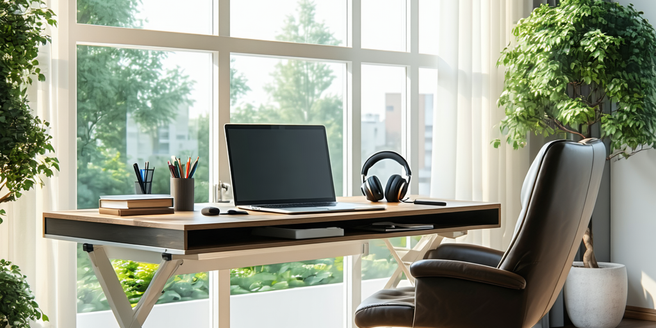
Choosing the Perfect Workspace
Selecting an ideal workspace at home is crucial for productivity. Consider factors such as location, lighting, and noise levels. A quiet, well-lit area away from distractions can create a conducive environment for work. Ergonomic furniture, like an adjustable chair and desk, helps maintain comfort over long work sessions. It’s essential to personalize your workspace to suit your style while ensuring it remains clutter-free. Investing in a good pair of headphones can also help minimize background noise, allowing for better focus. Moreover, having a clear separation between your work area and personal space can enhance mental boundaries, helping to switch off after work hours. Plants or artworks can add a personal touch and improve overall mood and creativity, making your workspace a pleasant place to be.
Essential Tools and Technology
Equipping your home office with the right technology is vital for seamless remote work. Start with a reliable high-speed internet connection to handle video conferences and large file transfers. A computer or laptop with up-to-date software is essential, alongside peripherals like a good quality webcam and microphone for clear communication. Cloud services, such as Google Workspace or Microsoft 365, are indispensable for collaboration and accessing documents from anywhere. Consider using project management tools, like Trello or Asana, to keep tasks organized and manage team projects efficiently. Noise-cancelling headphones can enhance focus, especially in a noisy household. Lastly, ensure you have necessary cybersecurity measures to protect your data and ensure privacy, such as a VPN and updated antivirus software.
Ergonomics for Comfort and Health
Ergonomics is vital for maintaining health while working remotely. Start with an adjustable chair offering lower back support to avoid posture-related issues. The height of your desk and chair should allow your eyes to be level with the top of your computer screen, promoting a neutral neck position. Footrests can support proper posture if your feet don’t comfortably reach the floor. Arrange your keyboard and mouse within easy reach to prevent straining wrists. Taking regular breaks to stand, stretch, and move around is essential in preventing stiffness and eye strain. Additionally, consider setting up your workspace near a window to benefit from natural light, which can also help reduce eye fatigue and boost vitamin D levels, ultimately enhancing overall well-being.
Maintaining Work-Life Balance
Creating a clear division between work and personal life is essential when working from home. Start by setting strict working hours, establishing when you start and finish your workday, to reinforce boundaries with yourself and others. Communicate these hours to your household and colleagues to ensure uninterrupted focus. Develop a routine that begins your day with an activity that signals the start of work mode, like a short walk or cup of coffee. Designate a specific work area, and at the end of the day, tidy your space to symbolize closure. Technology can be both a blessing and a curse, so know when to switch off from work-related notifications. Engaging in hobbies or exercise after work can help disconnect from work stress and maintain mental health.
Enhancing Productivity and Focus
Maximizing productivity while working remotely involves strategic planning and self-discipline. Start by setting daily and weekly goals to give your work structure and measurable targets. Use tools like time-tracking apps or timers to allocate dedicated periods for focused work, minimizing distractions and enhancing concentration. It’s important to prioritize tasks by urgency and significance, possibly utilizing a system like the Eisenhower Box to manage workload effectively. Develop a routine that includes regular breaks; techniques like the Pomodoro Technique can help maintain sustained productivity and reduce burnout. Personalizing your workspace with motivational quotes or vision boards can inspire and maintain focus. Lastly, avoid multitasking, as it can reduce efficiency; instead, focus on one task at a time for better output.
Staying Connected with Your Team
Maintaining connections with colleagues in a remote setting requires proactive communication and use of the right tools. Regular video meetings can foster face-to-face interaction, maintaining a sense of team cohesion. Platforms like Zoom or Microsoft Teams offer convenient solutions for virtual meetings, including features that allow for collaboration. Daily or weekly check-ins with your team can aid in aligning goals and resolving issues promptly. Instant messaging apps such as Slack or Microsoft Teams serve as informal communication channels, supporting quick interaction and team bonding. It’s crucial to establish clear communication practices, like etiquette for response times and preferred channels for different types of communication, to ensure efficiency and prevent misunderstandings. Encouraging team-building activities virtually can further strengthen relationships and morale.
